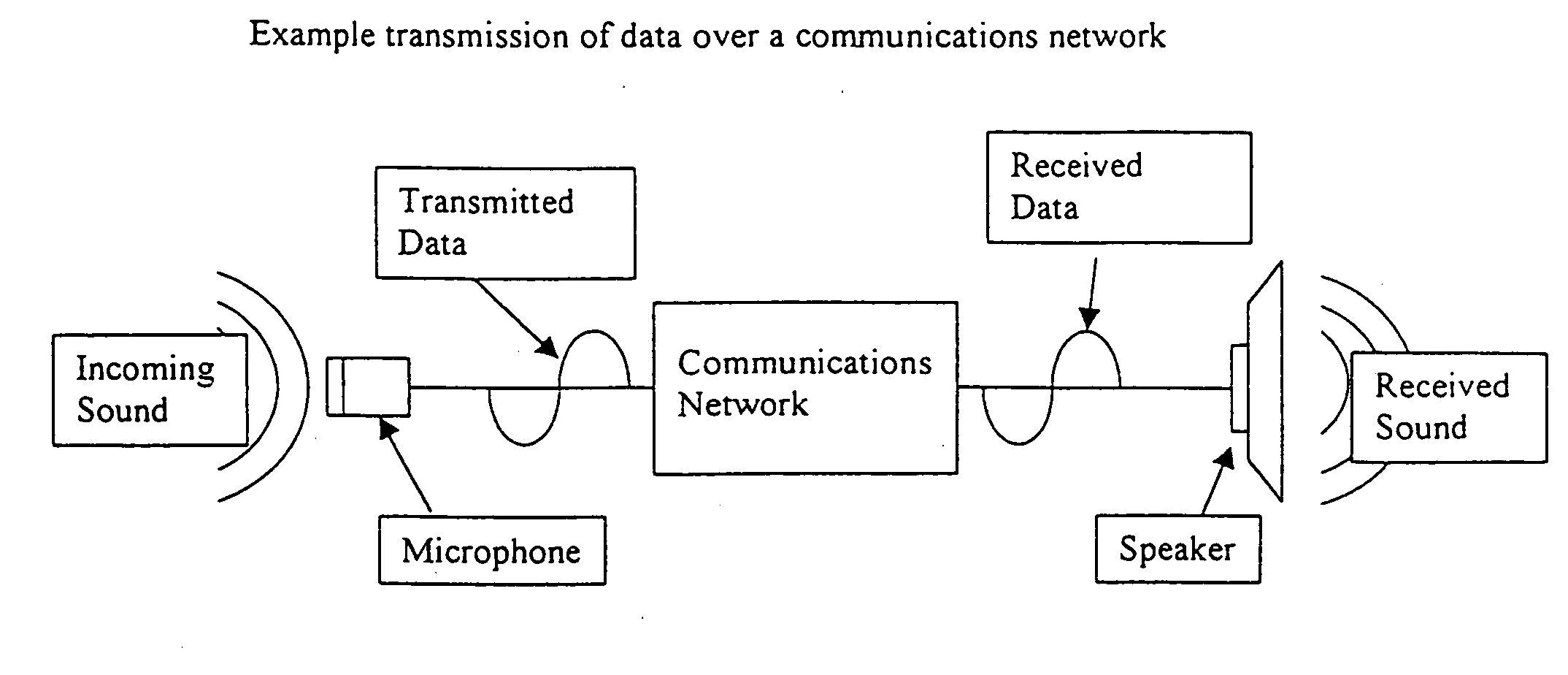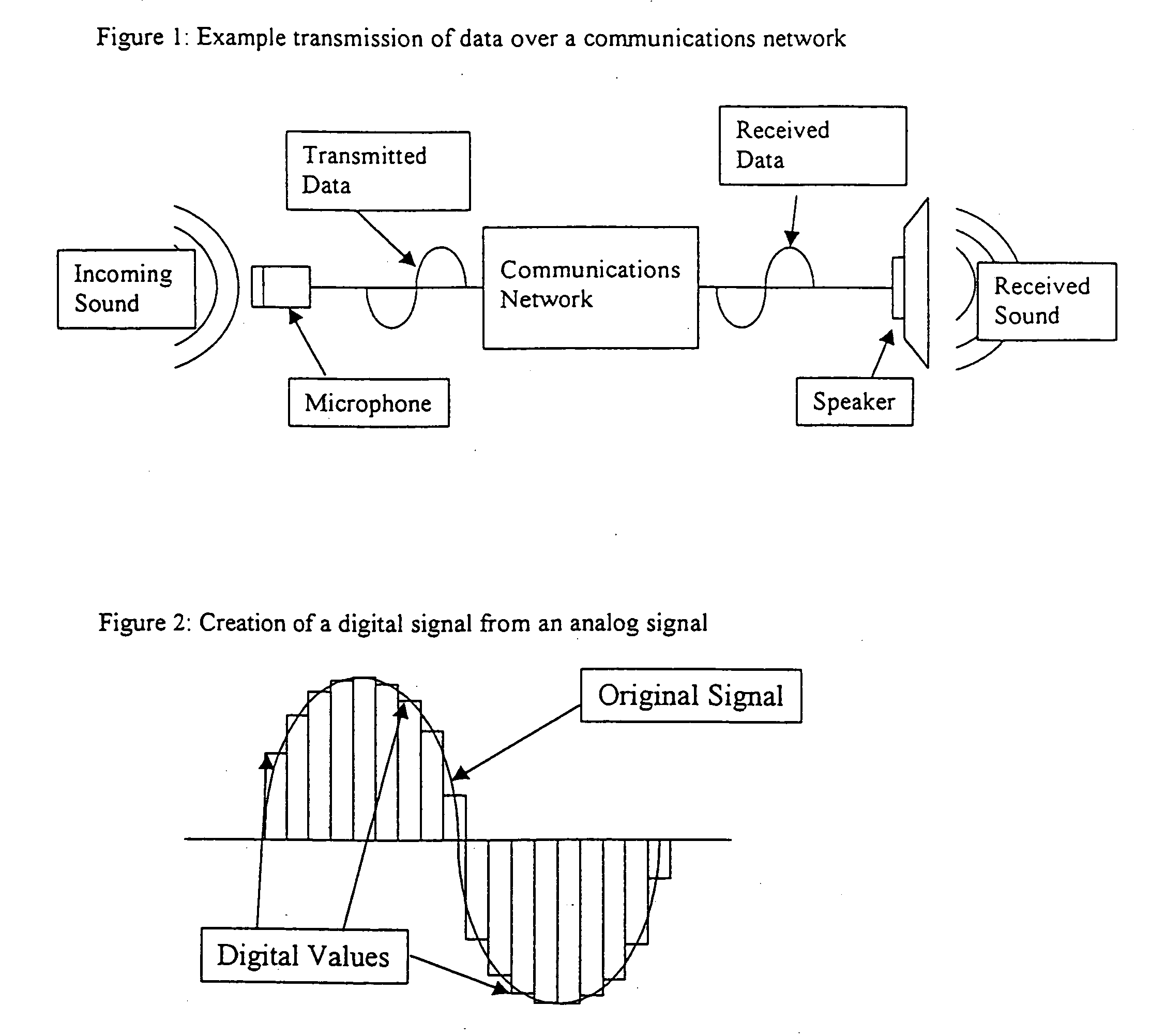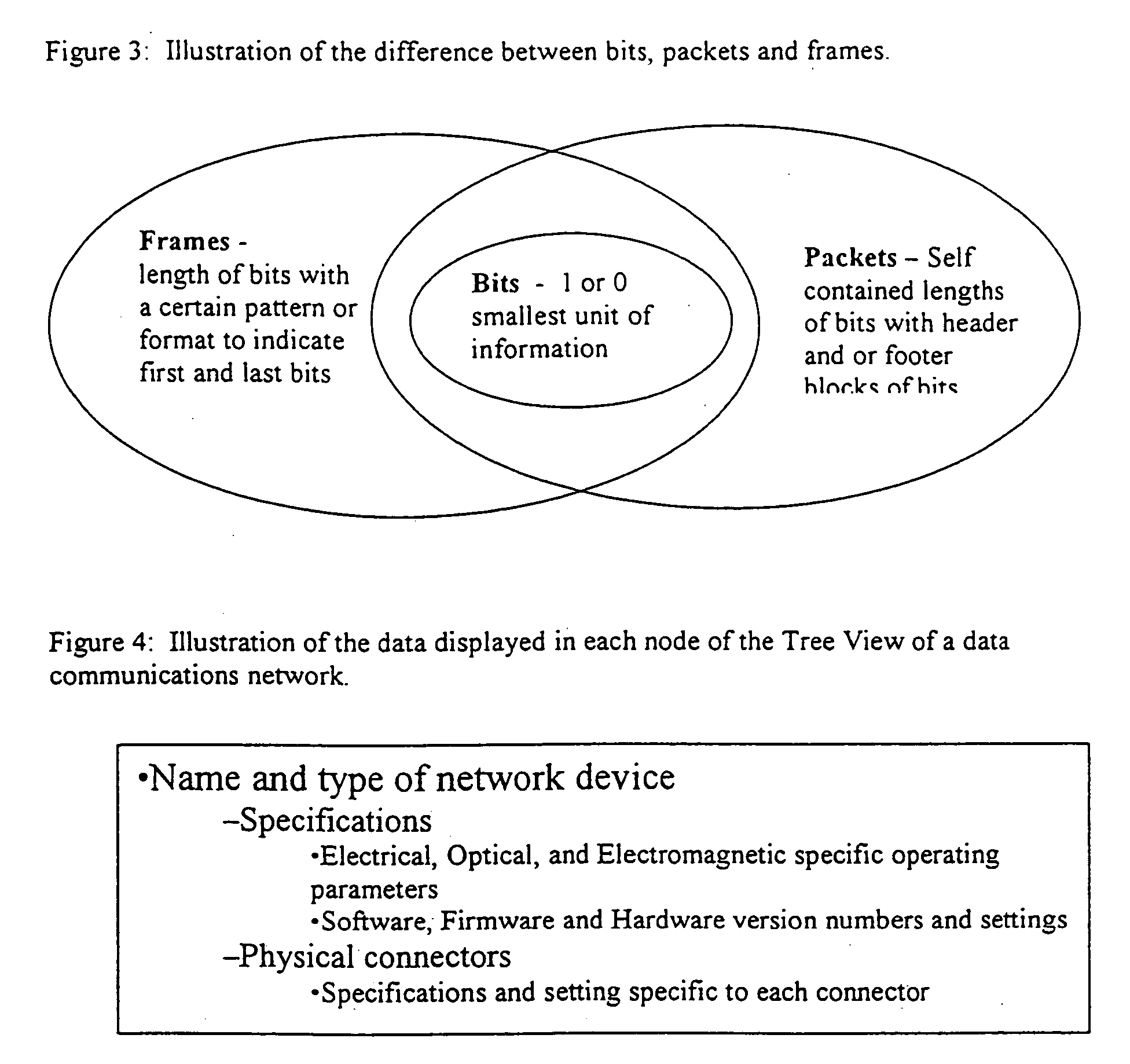System and method for design, tracking, measurement, prediction and optimization of data communication networks
a data communication network and data communication technology, applied in the field of communication networks, can solve the problems of difficult prediction or even measurement of inability to accurately predict the exact performance of a given data communication network, and inability to reach the receiver correctly or not, so as to achieve the effect of quick and easy design, measurement, prediction and optimization
- Summary
- Abstract
- Description
- Claims
- Application Information
AI Technical Summary
Benefits of technology
Problems solved by technology
Method used
Image
Examples
Embodiment Construction
[0064] The present invention contemplates the abilities to design, measure, predict and optimize the performance of a data communication networks. The invention uses an accurate computer generated three-dimensional model of a communications network stored in a computer database environment. The invention allows the user to place the network cables, hubs, routers, switches, bridges, wireless access points, amplifiers, splitters, antennas (point, omnidirectional, directional, leaky feeder, distributed, array, etc.) transceivers, terminators and other communications and computer networking equipment in their actual modeled physical locations. The present invention uses this highly accurate model of the physical layout of infrastructure to allow a user to visualize, predict and optimize the performance of any communication network in any 3-D site specifically modeled physical location.
[0065] The present embodiment of the invention is capable of modeling the site-specific communications...
PUM
 Login to View More
Login to View More Abstract
Description
Claims
Application Information
 Login to View More
Login to View More - R&D
- Intellectual Property
- Life Sciences
- Materials
- Tech Scout
- Unparalleled Data Quality
- Higher Quality Content
- 60% Fewer Hallucinations
Browse by: Latest US Patents, China's latest patents, Technical Efficacy Thesaurus, Application Domain, Technology Topic, Popular Technical Reports.
© 2025 PatSnap. All rights reserved.Legal|Privacy policy|Modern Slavery Act Transparency Statement|Sitemap|About US| Contact US: help@patsnap.com



